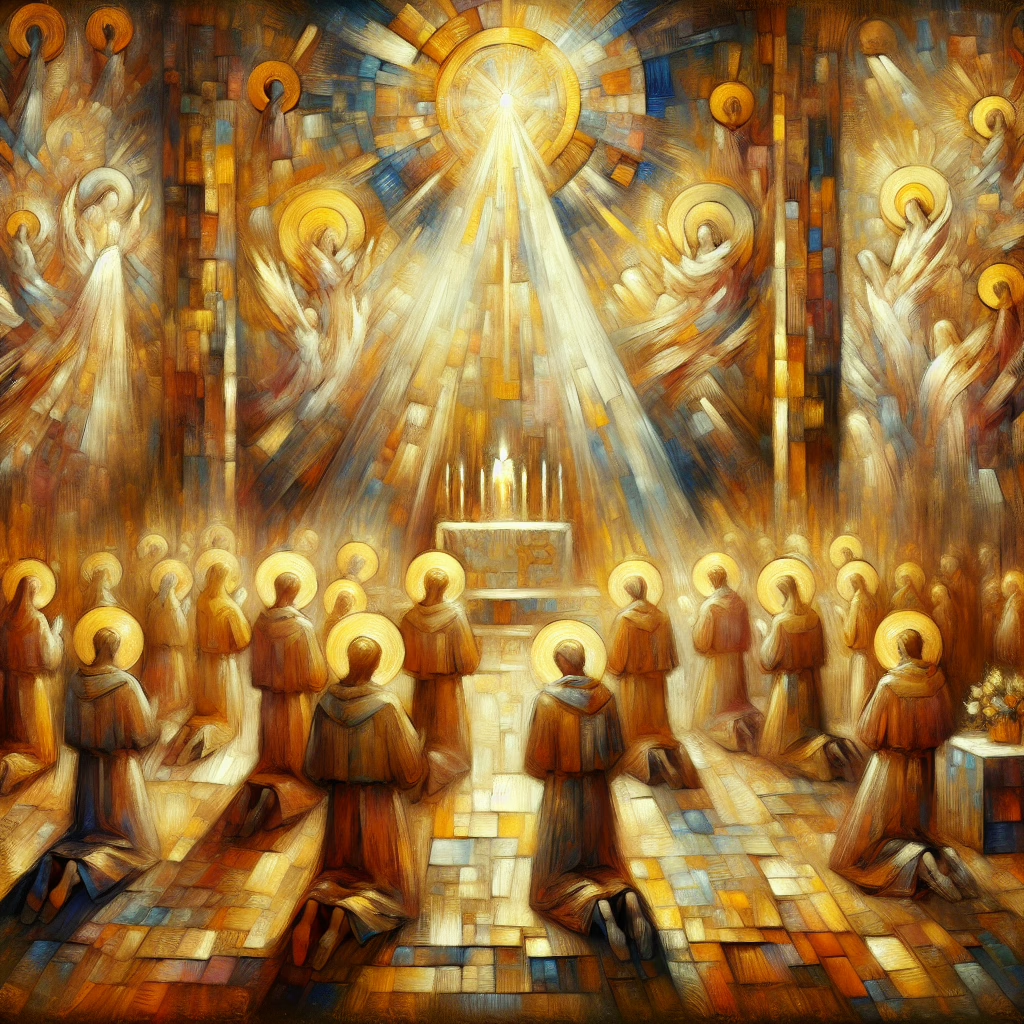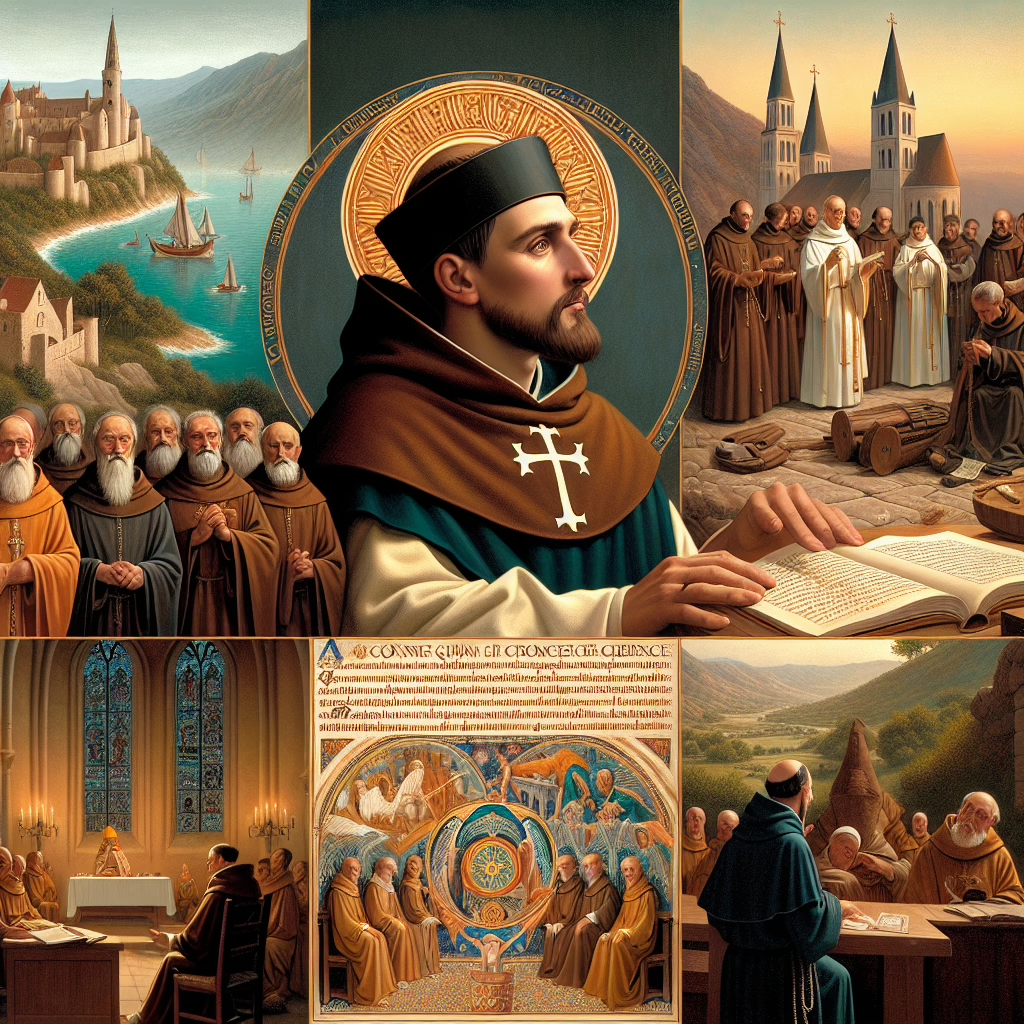St. Gregory of Narek: Abbot and Doctor of the Church
Introduction: The Mystical Journey of St. Gregory of Narek
"In the craggy embrace of the Armenian Highlands, near the shimmering waters of Lake Van, there lived a man whose heart was forever aflame with a divine love." This man was St. Gregory of Narek, a seminal figure in the Armenian Christian tradition and the wider Catholic faith. With his enduring spiritual legacy, Gregory is celebrated not only for his mystical writings but also for his influence in bridging diverse Christian traditions. As we delve into his life, miracles, and teachings, we discover why he is considered a significant theological figure and a Doctor of the Church.
1. Life and Significance of St. Gregory of Narek
1.1 Early Life and Education
St. Gregory was born around 950 A.D. in the region of Narek, near Lake Van. As the son of Bishop Khosrov, he was immersed in theological study from a young age, molded by both familial guidance and the monastic teachings of Anania Vartabed at Narek Monastery. After the early loss of his parents, Gregory's upbringing by his scholarly uncle helped solidify his spiritual foundation. The importance of his early education at the monastery can't be overstated, as it profoundly shaped his life’s work.
1.2 Monastic Life and Contributions
At 25, Gregory embraced the monastic life with fervor, being ordained as a priest and dedicating himself to teaching and writing at the monastic school in Narek. Among his notable works is a mystical interpretation of the "Song of Songs," but it is his "Book of Lamentations" that stands out. Known as an encyclopedia of prayer, this book is integral to his oeuvre, emblematic of human contrition and God's boundless compassion. The significance of his writings continues to reverberate through contemporary spirituality.
1.3 Declared Doctor of the Church
In 2015, Pope Francis declared St. Gregory of Narek a Doctor of the Church, a testament to his profound theological contributions. This recognition not only honors the Armenian Apostolic Church but also bridges it with contemporary Catholic belief. As Pope Francis stated, "A Doctor of the Church is not just a teacher of the faith, but one whose teaching resonates universally across time and space."
2. Key Events and Miracles
2.1 Important Events in St. Gregory's Life
Gregory's journey from his formative education at Narek to his eventual passing in 1003 A.D. marks a life dedicated to spiritual depth. His teachings traversed dark times, such as the desecration of his tomb during the Armenian genocide. Nevertheless, notable events in his life have shaped not only his spiritual journey but that of many others who followed.
2.2 Attributed Miracles and Their Significance
Gregory earned the moniker "the watchful angel in human form" through miracles attributed to him, signaling his holiness and inspirational life. These miracles significantly impacted the devotion of the faithful, drawing believers from diverse backgrounds to a deeper spiritual encounter.
3. Lessons and Teachings from St. Gregory's Writings
3.1 Themes of Mercy and Forgiveness
The central themes of mercy and forgiveness permeate Gregory's "Book of Lamentations," which vividly portrays the relationship between divine mercy and human fragility. These teachings remain relevant in contemporary Christian life, encouraging believers to embrace God's grace even amidst personal failings. As theologian Hans Urs von Balthasar remarked, "The heart of Christian theology is the encounter with divine mercy."
3.2 Personal Prayer and Spiritual Reflection
Gregory's writings serve as a model for personal prayer, urging us towards deep reflection and the pursuit of spiritual perfection. The "Book of Lamentations" offers structured prayer, encouraging believers to transform daily contemplation into a profound spiritual dialogue with God.
3.3 Universal Appeal of His Works
Gregory's teachings have been described as an "encyclopedia of prayer for all nations," contributing to ecumenical dialogue across Christian traditions. Their universal relevance resonates with those who seek spiritual unity amidst diverse beliefs and customs, providing a bridge to deeper understanding.
4. Prayers and Devotional Practices Inspired by St. Gregory
4.1 Using the Book of Lamentations for Daily Prayer
Incorporating Gregory's "Book of Lamentations" into daily life allows individuals to engage in meaningful spirituality and meditation. Each chapter provides a pathway to divine dialogue, a practical devotional guide for personal spirituality.
4.2 Traditional and Contemporary Practices
Traditional Armenian liturgical music infused with Gregory's writings offers a rich devotional tapestry. Meanwhile, contemporary practices such as journaling and prayer groups provide modern interpretations for engaging with his teachings.
4.3 The Role of Sacred History in Meditation
Reflecting on biblical themes evident in Gregory's writings deepens one's faith and enhances comprehension of Christian theology. These practices connect personal faith journey with the broader narrative of sacred history, enriching understanding and spiritual growth.
Conclusion: Embracing the Legacy of St. Gregory of Narek
St. Gregory’s life, rich in spiritual and theological depth, continues to inspire believers across centuries. His dedication to mercy, prayer, and unity leaves a lasting impact on the Catholic faith while inviting individuals towards a universal understanding of divine love. As we reflect on Gregory's journey, we find a call to deepen our own faith through study and prayer. Dive into his inspiring works and teachings for your personal spiritual growth and exploration of Devotionals and Writings to further your journey in faith.
For further reading, consider these books on Amazon:
- "The Doctor of Mercy: The Sacred Treasures of St. Gregory of Narek" by Michael Papazian – Amazon Link
- "The Armenian Prayer Book of St. Gregory of Narek" by Grigor Narekatsi – Amazon Link
By engaging with these texts, may we come to embrace the legacy of St. Gregory of Narek and draw nearer to the divine wellspring of grace.





